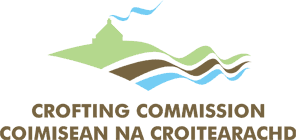While I'm still alive
Crofting is essential to the culture and economy of the Highlands and Islands of Scotland. When a croft is not actively used, it's a missed opportunity to help the region with issues like population decline, land management, and biodiversity.
An unused croft will deteriorate over time. The land, fences, buildings, and drainage will decay, making it much harder for a new crofter to bring it back to a working condition. Invasive plants can also take over and removing them is often expensive and time-consuming.
Why pass your croft on early?
There are benefits for both you and the person who takes it over:
- Your wishes are clear
- The croft stays in good condition
- Avoid legal complications. It helps you avoid a complex legal process called “intestate succession,” which can take time and be difficult to resolve
- Oversee the process. You can be involved in the transfer and make sure everything is handled correctly
- Share your expertise. Pass on your knowledge and experience
- Prevent family disputes. It helps avoid disagreements among potential successors.
- See the benefits. You get to see the positive impact the croft has in the hands of a new crofter
How to do it
The process for passing on a croft depends on whether you are a tenant crofter or an owner-occupier crofter.
For tenant crofters: assignation
Assignation is the permanent transfer of your croft tenancy to a person you choose. The Crofting Commission must approve this transfer. You can give the tenancy to a family member or another proposed assignee.
If there's a house on the croft, you can either separate it from the croft beforehand (decrofting) or include it in the transfer if you have other living arrangements.
Important: Assignation is a permanent process. It cannot be reversed. You should always get independent legal advice before you proceed.
For owner-occupier crofters: change of ownership
The transfer of ownership for an owner-occupied croft is handled by a solicitor. This is also a permanent change that cannot be reversed.
Important: It's highly recommended that you find a solicitor with specific knowledge and experience in crofting law. The Law Society of Scotland can help you find a suitable professional.
